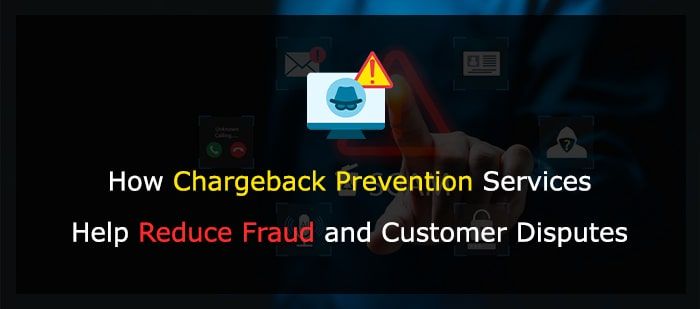
Introduction to Chargeback Prevention
In the digital marketplace, businesses encounter significant risks from fraudulent transactions and customer disputes. To mitigate these risks, Chargeback Prevention Services have become essential. When customers dispute transactions, chargebacks can arise, leading to financial setbacks and potential damage to a company’s reputation. Employing effective prevention strategies can help businesses combat these issues, securing their revenue streams and ensuring positive customer experiences.
Chargeback Prevention Services work by identifying and addressing the underlying causes of chargebacks. These services utilize advanced monitoring tools and fraud detection algorithms to spot suspicious activities early. By taking proactive measures, businesses can intercept potential fraud before it impacts their bottom line. Furthermore, these services often include dispute management solutions, which help in resolving issues swiftly and efficiently, thereby reducing the number of chargebacks.
A significant component of these services is their ability to provide real-time analysis and reporting. This allows businesses to stay informed about transaction patterns and detect anomalies quickly. By maintaining continuous oversight, companies can adapt their strategies to counter evolving threats, ensuring that their systems remain robust and effective against fraud.
In addition to fraud prevention, these services also help in refining customer service practices. By understanding the common reasons for disputes, businesses can improve their transaction processes and customer interactions. This not only minimizes the chances of chargebacks but also enhances overall customer satisfaction.
Incorporating Chargeback Prevention Services into business operations requires careful planning and execution. By integrating these services seamlessly with existing payment systems and customer service protocols, companies can create a secure and efficient transaction environment. With the right tools and strategies, businesses can protect themselves from financial losses and maintain the trust of their customers in an increasingly digital world.
Some Related Blogs
- How to Integrate Chargeback Prevention Tools with Your Payment Gateway
- What Are Chargeback Prevention Services and How Do They Work?
- Top Chargeback Prevention Services for E-commerce Businesses
- Step-by-Step Guide to Chargeback Dispute Resolution
Benefits of Chargeback Prevention Services
Chargeback Prevention Services offer several advantages for businesses looking to minimize fraud and customer disputes. One of the primary benefits is the reduction of fraudulent activities. By implementing advanced monitoring systems, these services can detect and mitigate potential fraud before it escalates. This proactive approach not only helps in maintaining revenue but also protects the business from financial pitfalls.
Another key benefit is the protection of revenue. Chargeback fees can be costly, and multiple disputes can even jeopardize a business’s relationship with its payment processor. By reducing the number of chargebacks, companies can maintain steady cash flow and avoid unnecessary fees. Moreover, by addressing disputes efficiently, businesses can improve their reputation, fostering trust and loyalty among customers.
Finally, Chargeback Prevention Services contribute to enhancing customer trust. When customers feel secure knowing their transactions are protected, they are more likely to continue doing business with the company. This trust is invaluable in building long-term customer relationships, which are essential for sustained business growth.
Features of Effective Chargeback Prevention
Chargeback Prevention Services need to incorporate several key features to be truly effective. One of the most critical aspects is continuous transaction monitoring. Utilizing sophisticated algorithms, these services can flag activities that deviate from normal patterns, giving businesses the chance to intercept fraud before it leads to chargebacks. This kind of vigilance is vital for staying ahead of evolving fraudulent tactics.
Verification processes are another cornerstone of effective chargeback prevention. By confirming customer identities and transaction details, businesses can minimize the risk of fraudulent chargebacks. Tools such as multi-factor authentication, address verification, and real-time data analysis are instrumental in strengthening these verification processes. These measures not only bolster security but also ensure that genuine customers can complete their transactions smoothly.
![]()
Email us anytime!
Email customer service 24/7
![]()
Call us anytime!
Reach customer care 24/7 at +1 (888) 901-8653
In addition to monitoring and verification, effective chargeback prevention requires robust data analytics. By analyzing transaction data in real-time, businesses can quickly identify trends and patterns that may indicate fraud. This allows companies to adjust their strategies proactively, staying one step ahead of potential threats.
Customization is another crucial feature. Different businesses have different needs, so it’s essential that Chargeback Prevention Services offer adaptable solutions. By working closely with service providers, companies can tailor these services to meet their specific requirements, ensuring that all transaction processes are well-protected without compromising efficiency.
Lastly, an integrated approach is vital for success. Chargeback Prevention Services should seamlessly work with existing payment systems and customer service protocols. This ensures a cohesive defense against fraud, allowing businesses to maintain a secure transaction environment without disrupting the customer experience. By aligning prevention strategies with overall business operations, companies can create a unified, effective barrier against fraudulent activities.
Integrating Prevention Services with Business Operations
To effectively incorporate Chargeback Prevention Services into business operations, it’s essential to start with a comprehensive assessment of existing payment systems. This involves identifying potential vulnerabilities and ensuring that the prevention tools can integrate seamlessly with current technologies. Collaborating with service providers during this phase allows businesses to customize solutions to their unique requirements, thereby optimizing the overall transaction process.
Once the integration begins, continuous monitoring should be implemented to ensure that all systems function harmoniously. This helps in identifying any discrepancies early on and allows for quick adjustments to be made, thereby maintaining the integrity of the transaction process. Regular audits and updates are crucial to keep the prevention measures up-to-date with evolving fraudulent tactics.
Employee training is another key aspect of successful integration. Staff should be well-versed in the new tools and protocols to efficiently manage and utilize Chargeback Prevention Services. Comprehensive training programs can equip employees with the skills to handle disputes effectively and recognize early signs of potential fraud.
It’s also important to establish clear communication channels between different departments. Cross-functional collaboration can significantly enhance the effectiveness of chargeback prevention efforts. For instance, the IT department should work closely with customer service teams to address any issues that arise and to provide seamless support to customers.
Effective integration also requires balancing security measures with customer convenience. While it’s vital to implement robust fraud prevention techniques, businesses must ensure that these measures do not create friction in the customer journey. User-friendly interfaces and transparent communication about security practices can reassure customers and maintain a positive shopping experience.
Finally, leveraging data analytics can offer valuable insights into transaction patterns and customer behavior. By continuously analyzing this data, businesses can refine their prevention strategies, making them more effective over time. This proactive approach helps in staying ahead of potential threats, ensuring a secure and efficient transaction environment for both the business and its customers.





